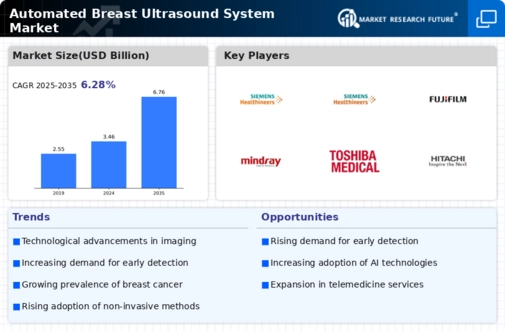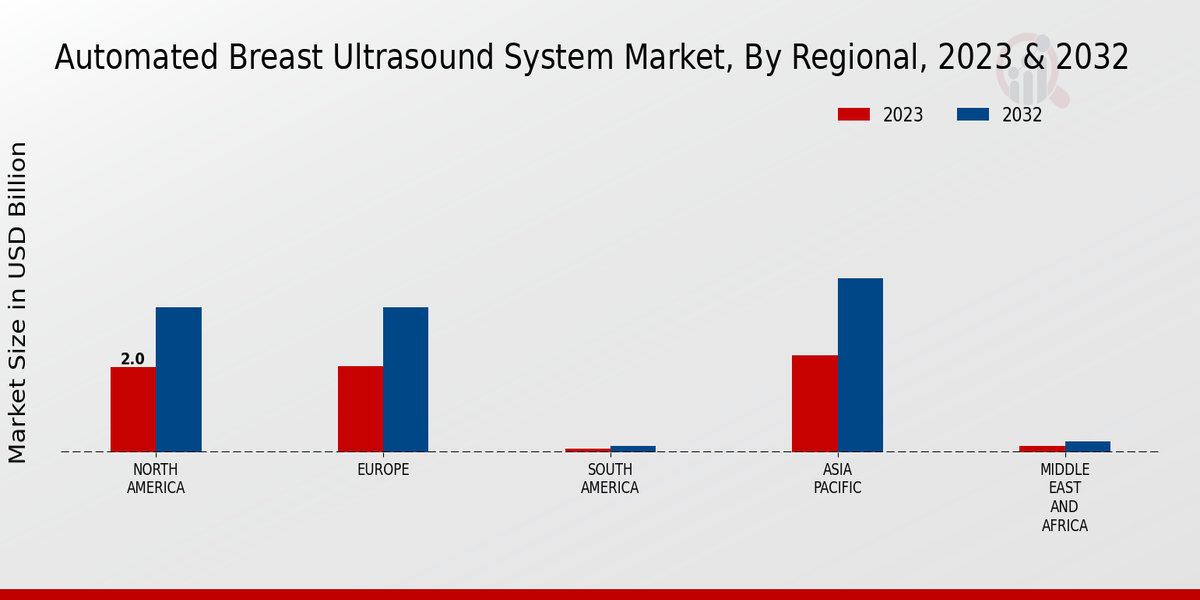Automated Breast Ultrasound System Market Summary
The Global Automated Breast Ultrasound System Market is projected to grow from 3.46 USD Billion in 2024 to 6.76 USD Billion by 2035.
Key Market Trends & Highlights
Automated Breast Ultrasound System Key Trends and Highlights
- The market is expected to experience a compound annual growth rate (CAGR) of 6.28% from 2025 to 2035.
- By 2035, the market valuation is anticipated to reach 6.76 USD Billion, indicating robust growth potential.
- In 2024, the market is valued at 3.46 USD Billion, reflecting a solid foundation for future expansion.
- Growing adoption of automated breast ultrasound systems due to increasing awareness of breast cancer screening is a major market driver.
Market Size & Forecast
| 2024 Market Size | 3.46 (USD Billion) |
| 2035 Market Size | 6.76 (USD Billion) |
| CAGR (2025-2035) | 6.28% |
Major Players
GE Healthcare, Siemens Healthineers, Carestream Health, Acuson, FUJIFILM Holdings, Koninklijke Philips, Analogic Corporation, SonoScape Medical, Mindray, Toshiba Medical Systems, Hitachi Medical, Hologic, Samsung Medison, Esaote











